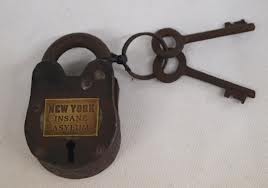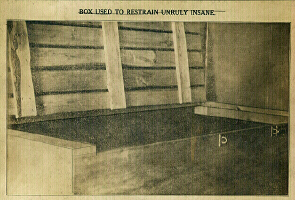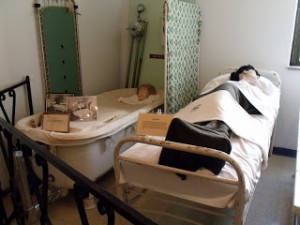When the Medico-Legal Society leveled charges of abuse against St. Elizabeths’s staff in 1906 (see last post), the public was understandably outraged. However, when the Society would not assist in an investigation nor even let others review its supposed records of the abuse, it lost credibility.
The Washington Herald sent a reporter to St. Elizabeths to investigate one of the “horrors” the Medico-Legal Society had particularly mentioned, the needle bath. “Evidently the informant of the committee as to this particular instrument of torture, was one of those individuals who never take a bath unless it is forced,” wrote the Herald’s reporter. He then described the needle bath (a form of hydrotherapy) as a “scientific shower bath,” and said that a patient undergoing “this particular ‘torture’ seemed to enjoy it.”
Though it is likely that certain attendants were rougher than they needed to be, or disobeyed orders against restraining patients, a subsequent investigation showed that rampant abuse did not exist. A surviving letter from a patient to his sister asserted that “the reports you have seen in the papers in Boston are not so.”
The patient went on to give a practical example of the care he was receiving. “Well, take me for a sample, I weigh more at present than I ever did before, then this should be sufficient to show that we have plenty to eat, and it is good, too.”
My next two posts will conclude the investigation.








